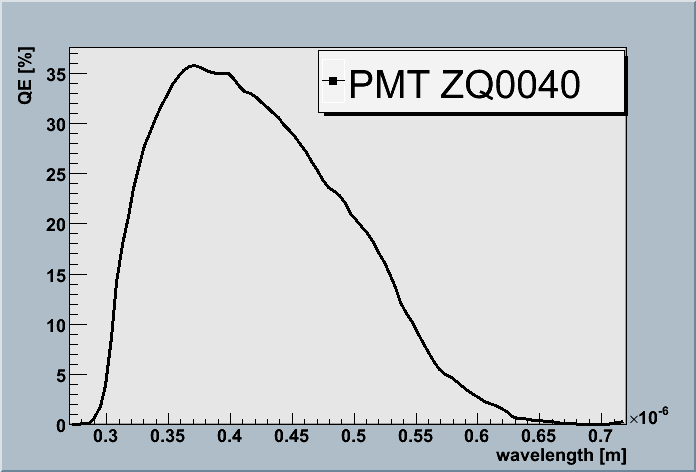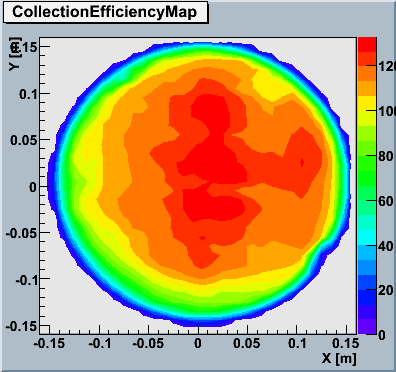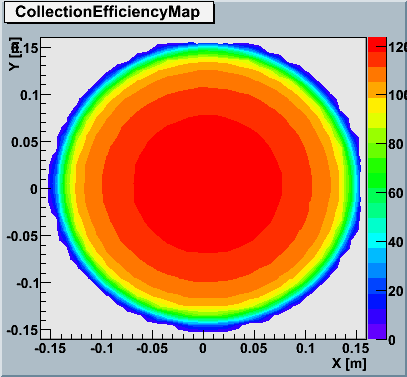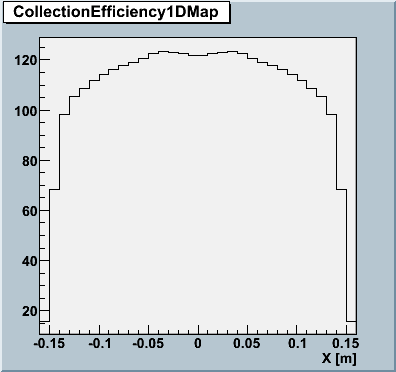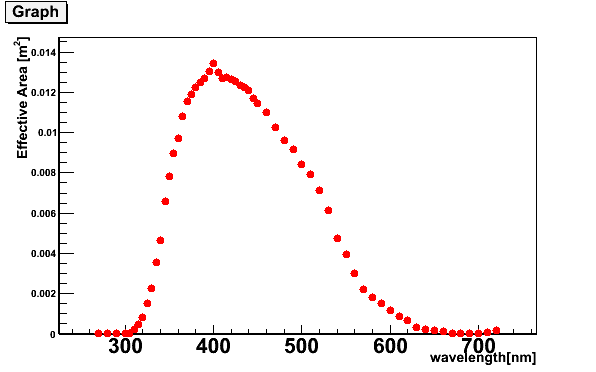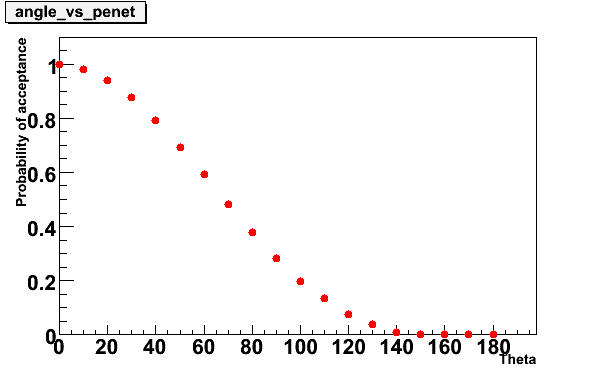

DOM acceptance with the super PMT
The DOM acceptance as a function of angle and wavelength are simulated
using ROMEO
and the GEANT4-based DOMIMANT with the calibration data of the bare super PMTs.
They are inputs for the photonics table production as we have done for the regular IceCube DOMs.

- The bare PMT data
- The PMT has been calibrated with the same procedures with those for
Golden PMT calibration. The absolute
efficiency was measured at the central region of its photocathode surface.
It was then converted to the area-averaged efficiency using the cathode
two dimensional scan map.
For the photonics table production, we select "ZQ0040" super PMT. The calibration
data are plotted below.
- Modeling of PMT and DOM
- Since the photonics table generation requires the average PMT and
DOM behaviors, we constructed the PMT model based on the Chiba's sample data
obtained by measurements of more than 100 PMTs. This model then gives the azimuthal-averaged
photocathode response map shown below. The ROMEO takes this model data together with
the pre-calculated tables by GEANT4 tracing photons propagating in the glass and gel.
- ROMEO simulation for the DOM acceptance calculation
- Now ROMEO calculates the photon detection probability with every direction
and wavelength using the area-averaged absolute QE of "ZQ0040" PMT and
the azimuthal-averaged photocathode response of the model PMT.
The resultant effective area of the DOM for vertical photons (0 deg) as a function
of wavelengths and the relative angular acceptance are displayed below.
The area for 400 nm photons increases by 21 % compared to that with the regular IceCube PMT.
syoshida@hepburn.s.chiba-u.ac.jp
Last modified: Sat Feb 23 14:39:32 JST 2008
